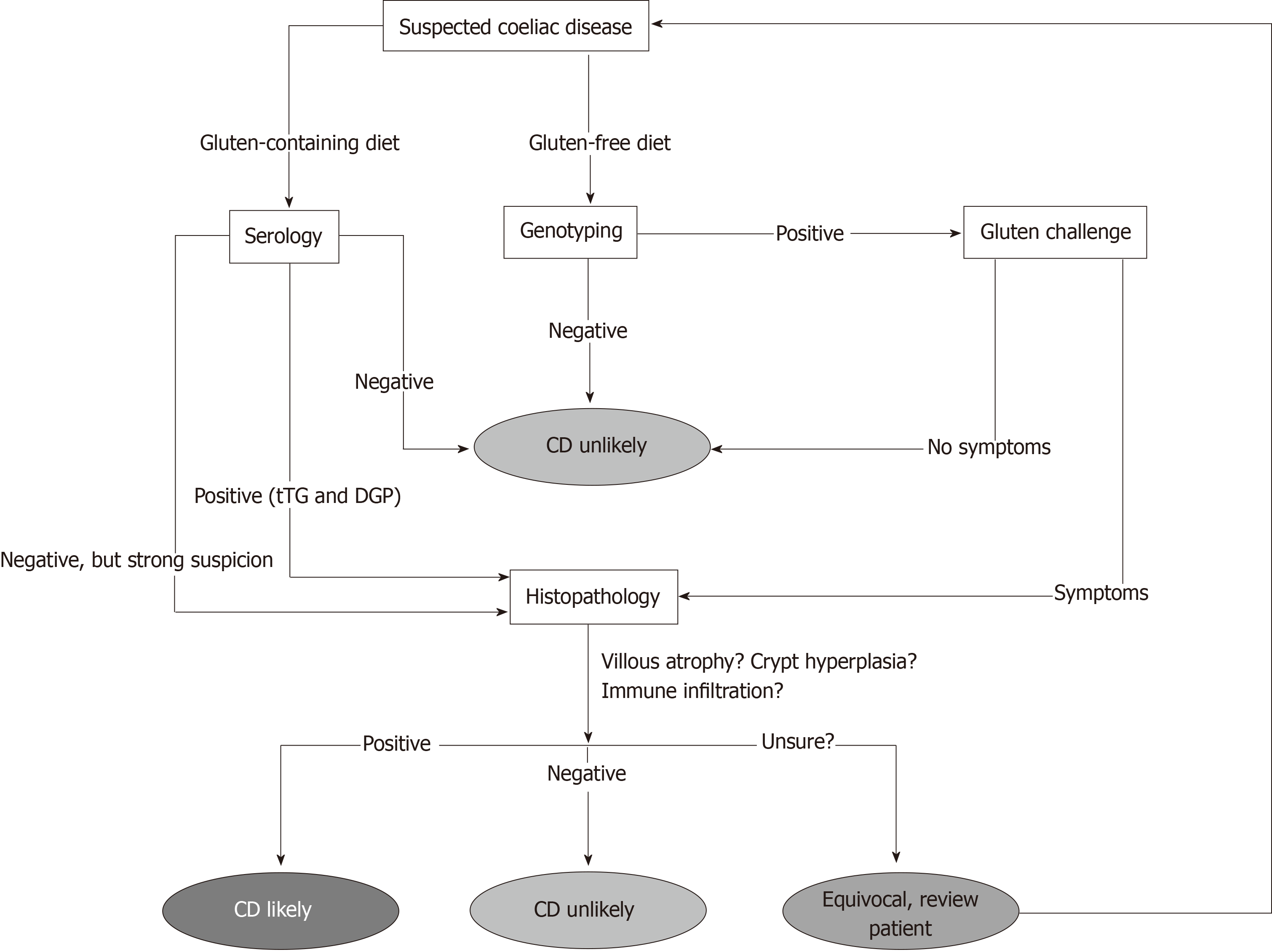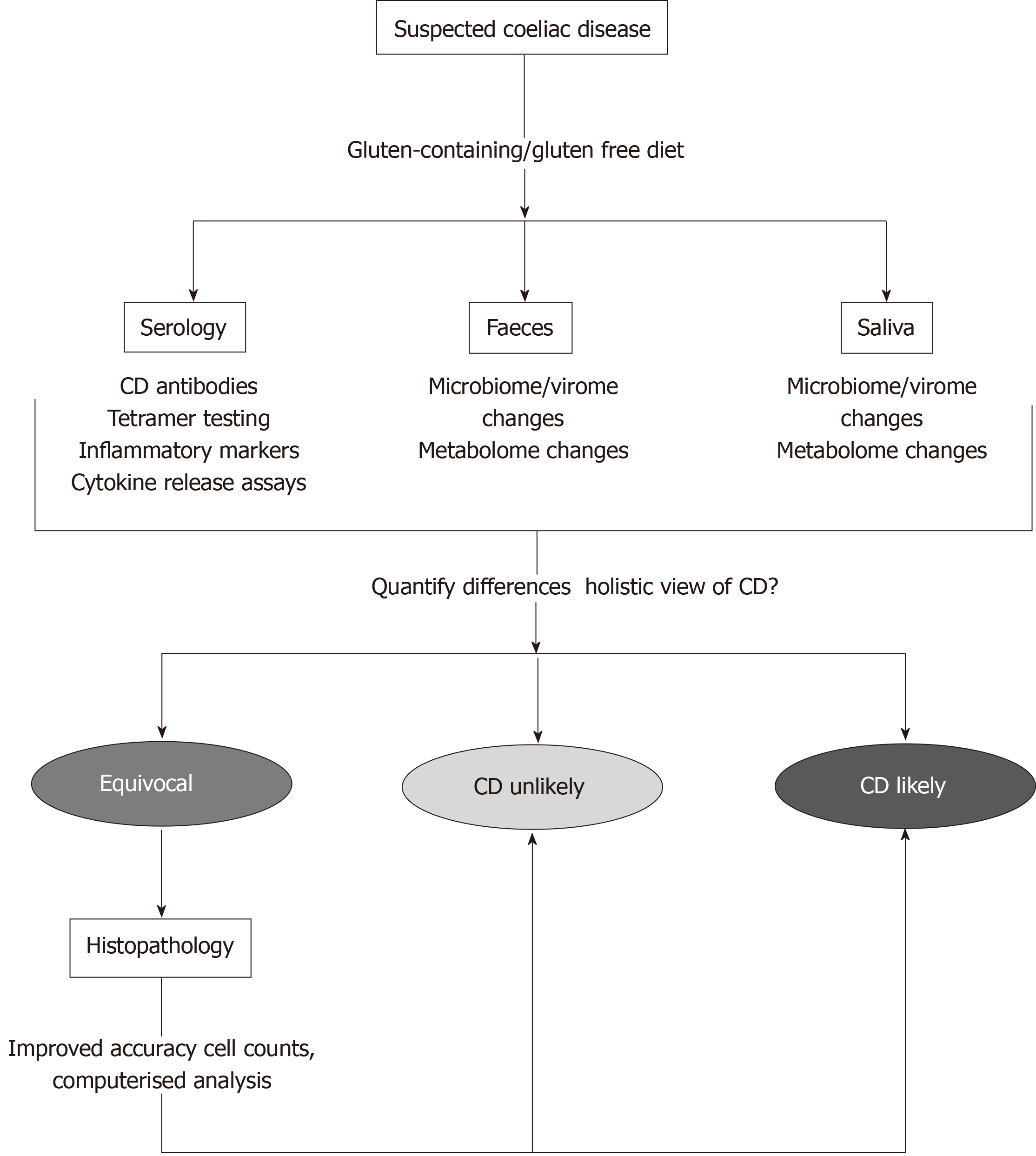Copyright
©The Author(s) 2020.
World J Gastroenterol. Jan 7, 2020; 26(1): 1-10
Published online Jan 7, 2020. doi: 10.3748/wjg.v26.i1.1
Published online Jan 7, 2020. doi: 10.3748/wjg.v26.i1.1
Figure 1 Current diagnostic pathway for suspected coeliac disease.
Currently, serology forms the front line of testing for patients currently on a diet containing gluten whilst genotyping can be used for patients who aren’t consuming gluten. Histopathology is currently the most conclusive test for the presence of the condition, even though diagnosis can be difficult for patients with mild or equivocal pathology. CD: Coeliac disease; tTG: Tissue transglutaminase; DGP: Deamidated gliadin peptides.
Figure 2 Proposed diagnostic pathway for suspected coeliac disease.
Several less invasive measures could be investigated at once using markers in serum, faeces and saliva. If reliable differences could be quantified in coeliac disease, then patients could be diagnosed rapidly and with increased accuracy. For equivocal patients, histopathology of the small intestine would still be used, although increasing the accuracy of these measures through cell counts and computerised analysis would need to be considered. CD: Coeliac disease.
- Citation: Charlesworth RP. Diagnosing coeliac disease: Out with the old and in with the new? World J Gastroenterol 2020; 26(1): 1-10
- URL: https://www.wjgnet.com/1007-9327/full/v26/i1/1.htm
- DOI: https://dx.doi.org/10.3748/wjg.v26.i1.1










